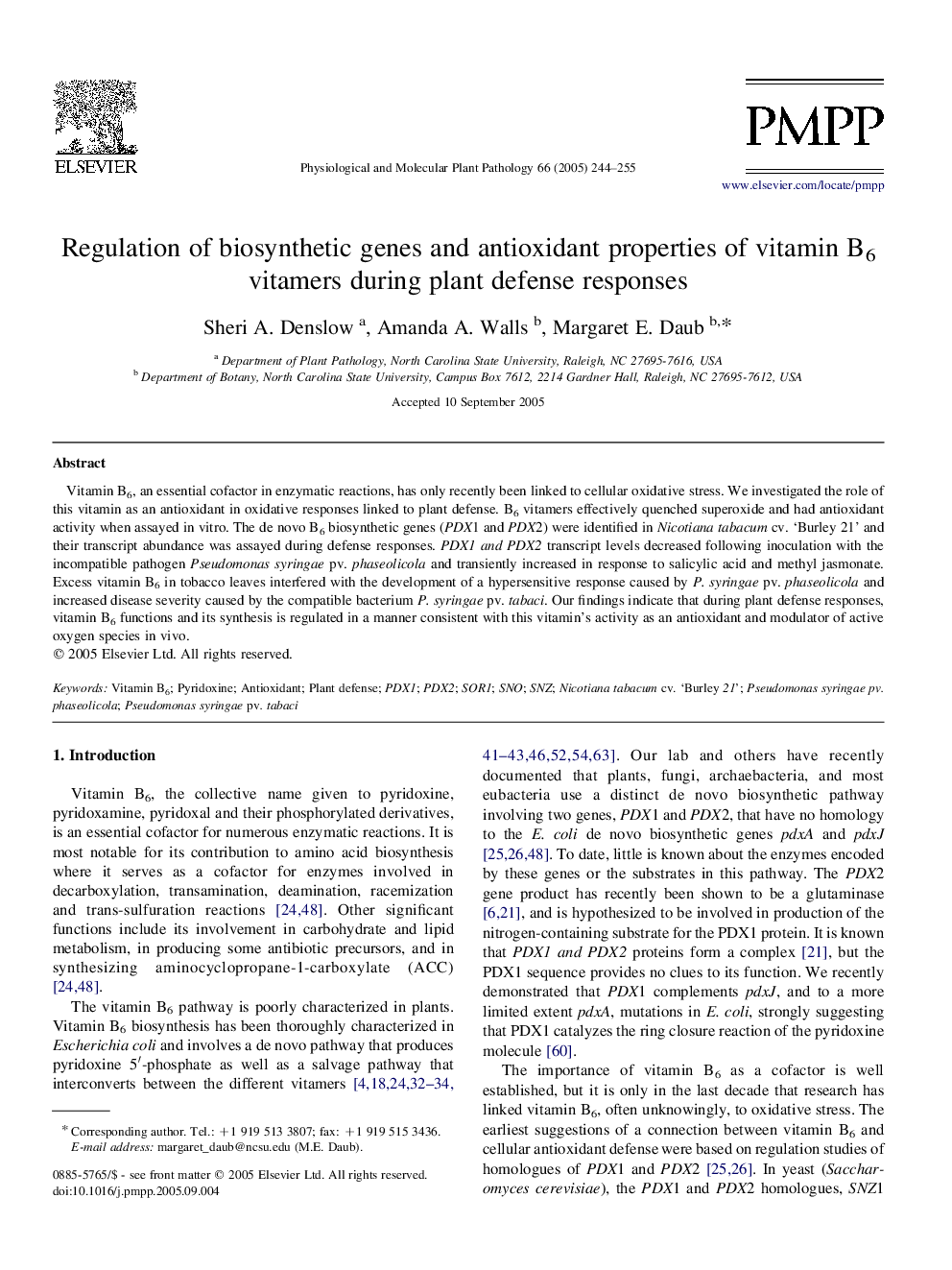| Article ID | Journal | Published Year | Pages | File Type |
|---|---|---|---|---|
| 9144678 | Physiological and Molecular Plant Pathology | 2005 | 12 Pages |
Abstract
Vitamin B6, an essential cofactor in enzymatic reactions, has only recently been linked to cellular oxidative stress. We investigated the role of this vitamin as an antioxidant in oxidative responses linked to plant defense. B6 vitamers effectively quenched superoxide and had antioxidant activity when assayed in vitro. The de novo B6 biosynthetic genes (PDX1 and PDX2) were identified in Nicotiana tabacum cv. 'Burley 21' and their transcript abundance was assayed during defense responses. PDX1 and PDX2 transcript levels decreased following inoculation with the incompatible pathogen Pseudomonas syringae pv. phaseolicola and transiently increased in response to salicylic acid and methyl jasmonate. Excess vitamin B6 in tobacco leaves interfered with the development of a hypersensitive response caused by P. syringae pv. phaseolicola and increased disease severity caused by the compatible bacterium P. syringae pv. tabaci. Our findings indicate that during plant defense responses, vitamin B6 functions and its synthesis is regulated in a manner consistent with this vitamin's activity as an antioxidant and modulator of active oxygen species in vivo.
Related Topics
Life Sciences
Agricultural and Biological Sciences
Plant Science
Authors
Sheri A. Denslow, Amanda A. Walls, Margaret E. Daub,
